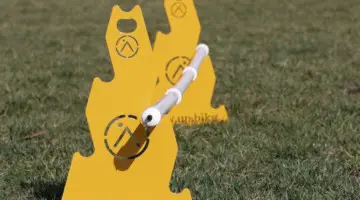If self-driving cars are already a reality, robots racing and teaching cyclocross shouldn’t be that far-fetched.
Scientists at MIT, with funding from DARPA, have proven that their robotic cheetahs are fully capable of jumping over sets of 40cm barriers, the UCI’s maximum height. And no, this isn’t April Fools’ Day.
Like any good cyclocrosser, the cheetah robot estimates the height and distance of the barrier, and adjusts its steps and approach speed.
The researchers’ work has also resulted in a conclusion relevant to cyclocrossers as well:
“If you want to optimize for, say, energy efficiency, you would want the robot to barely clear the obstacle — but that’s dangerous, and finding a truly optimal solution would take a lot of computing time,” Kim told MIT News.
It’s prudent advice to the new cyclocrosser, as the fastest way through the barriers, whether running at full stride or bunnyhopping the barriers, often is done with great risk, and sometimes results in lost time, or worse, an injury.
“In running, we don’t want to spend a lot of time to find a better solution,” Kim said.
Good advice for new cyclocrossers. Focus on racing and the course in front of you, and leave the better barrier running solution to MIT scientists and your robot instructors at your next cyclocross clinic.
Have a look in the video above for a glimpse into the future of (remote-control) cyclocross races, and for more information on your future cyclocross clinic instructors, see this MIT report.




























